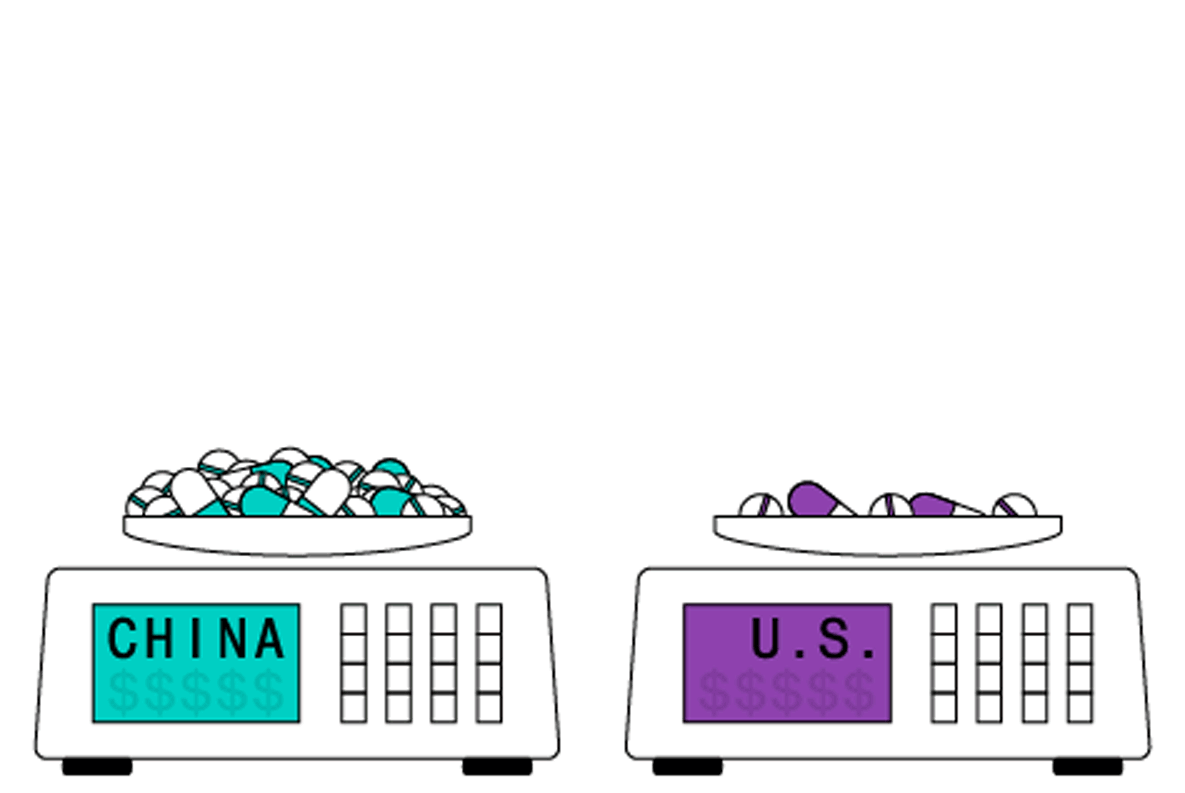
The Week in Charts (2/28/25)
View the video of this post here.
This week’s post is sponsored by YCharts.
“Sell in May and go away.” “Timing the market is the key to success.” “Now is the wrong time to invest.”
We hear these classic investing myths all the time and many believe them. YCharts’ Debunking Investing Myths Deck is packed with data and visuals that advisors can use to tackle these tired misconceptions and their help clients stay focused on their financial goals.
Download your copy of the deck and get 20% off your YCharts subscription when you initially sign up for the service.

The most important charts and themes in markets and investing…
1) The New King of Retail
25 years ago, Walmart’s revenue was 77x larger than Amazon.
15 years ago, Walmart’s revenue was 12x larger than Amazon.
10 years ago, Walmart’s revenue was 5x larger than Amazon.
5 years ago: Walmart’s revenue 2x larger than Amazon.
And today, for the first time, Amazon’s quarterly revenue of $188 billion is larger than Walmart’s ($181 billion).

Amazon’s rise has coincided with the secular trend of increasing online shopping. In 1999, less than 1% of all retail sales came from e-commerce. Today, that number stands at a record 16.4%. Where will it be in 10 years? Much higher.

2) The Cruelest Tax
Inflation is often referred to as the “cruelest tax” due its regressive nature, hitting the lowest income earners the hardest. When food, gas, and shelter costs rise at a rapid pace, that disproportionately hurts those with lower incomes as these essentials represent a higher percentage of their incomes.
On the opposite side of the spectrum are the highest income earners (top 10%), who are not immune from rising costs but are less impacted as essentials comprise a much lower share of their monthly budget.
These highest earners also tend to be the biggest owners of assets such as stocks (the top 10% own 87% of stocks) and houses, which have outpaced inflation by a wide margin over the past five years…

It should come as no surprise then to learn that the top earners have maintained their excess savings over the past few years of high inflation while the bottom 90% have been dipping into these savings in order to make ends meet. And this widening gap has translated into much bigger increases in spending from the top 10% versus the bottom 90%.

The result: the top 10% of income earners in the US (households making $250,000 or more) now account for half of all consumer spending, a record high. Three decades ago they accounted for roughly 36% of all spending.

3) Rising Credit Card Debt and Delinquencies
US Credit Card debt hit a record $1.2 trillion in the 4th quarter, rising 7% over the last year.


The interest rate on that debt remains near record highs, at 21.5%.

The combination of high debt levels and much higher interest rates is leading to an uptick in delinquencies. Over 11% of credit card balances in the US are now 90+ days delinquent, the highest since 2011.

4) Buffett Raising More Cash
Berkshire Hathaway’s Cash Pile has spiked to a record $334 billion, nearly doubling over the past year. Berkshire was a net seller of $6.7 billion in publicly traded stocks during the 4th quarter, marking the 9th straight quarter of net sales.

Berkshire is now holding over 27% of its assets in cash, a record high for the company.

Interestingly, while Berkshire has been raising cash, most fund managers have been doing the exact opposite. A recent BofA survey revealed average cash levels of just 3.5%, the lowest level in 15 years.

So while others have been getting more and more greedy, Warren Buffett seems to be getting more and more fearful, just as his famous quote instructed.
5) The Other Side of Mania
The meme coin frenzy of the past few months is fading fast, with the harsh reality of the weighing machine setting in.
- Dogecoin is down over 60% from its peak.

- Fartcoin has declined 90% from its peak.

- And the disgraceful Trump and Melania grift coins are down 85% and 94% from their peaks.

6) Don’t Lose the Broad Support: Show Us the Receipts
A new poll from Harvard CAPS/Harris revealed broad support for reducing the deficit (83%), cutting spending (83%), and conducting a full examination of all government expenditures (77%).


70% of respondents said that government expenditures are filled with waste, fraud, and inefficiency with 69% supporting $1 trillion in spending cuts.

This broad, bipartisan support is encouraging to see, and it would be a shame for the momentum here to be lost based on carelessness, exaggerated claims, or simply poor communication.
While DOGE has certainly provided more transparency into the massive amounts of wasteful/fraudulent/inefficient spending than anyone in modern history, they are also making claims beyond what they can back up.
For example, the doge.gov website is now saying they’ve saved an estimated $65 billion.

The only problem: the itemized savings on their “wall of receipts” totals $9.6 billion, which is actually lower than the $16.6 billion total from last week when $55 billion was the “estimated savings.”
Why the huge discrepancy?
We simply don’t know. Perhaps the evidence is forthcoming and will show up in a matter of days or weeks, but there’s also a possibility that a number of the “savings” claims are inaccurate or exaggerated. An explanation should be provided.
My suggestion: before announcing any more “savings,” DOGE should address the $56 billion in missing receipts. And going forward, they shouldn’t provide any concrete figures without triple verification, supporting documentation, and a few sentences explaining what exactly is being cut in plain English that everyone can understand.
For more on DOGE, view the latest episode of Signal or Noise here.
7) Delaying the American Dream
Only 24% of all US home sales in 2024 went to first-time home buyers, the lowest share in history.

The median age of first-time home buyers in the US moved up to 38 in 2024, the oldest on record.

Why is this happening?
Those in the younger generation who have yet to buy a home have essentially been priced out of the housing market as US housing affordability is worse today than ever before. The median American household would need to spend a record 47% of their income to afford the median priced home for sale, an impossibly high number that leaves little for anything else. And thus, the American Dream of homeownership has been delayed for many until this situation improves.

8) A Few Interesting Stats…
a) The % of NBA Shots that are 3-pointers has increased from 4% in 1985 to a record 42% today. Teams now average 38 3-pointers a game, up from just 3 in 1985.


b) 59% of all private-equity fundraising in 2024 went to the 6 largest managers (Apollo, Blackstone, Ares, KKR, Carlyle & Brookfield), up from 20% in 2019.

c) US Border Patrol arrested 29,000 people illegally crossing the Mexico border in January, the lowest level since May 2020.

d) Ferrari’s market cap recently moved up to a record $90 billion on sales of only 13,752 vehicles last year. For comparison, Volkswagen’s market cap is $37 billion lower despite selling over 9 million vehicles in 2024.
“We are not – we are not – an automotive company. We are a luxury company that is also doing cars.” – Ferrari CEO Benedetto Vigna

Get a FREE Wealth Path Analysis from Creative Planning to ensure you’re on the right path for 2025 and beyond.
Creative Planning is proud to provide comprehensive wealth management services to clients in all 50 states and abroad, with over $345 billion in assets under management and advisement. So whether you’re in New York, California, Texas, Florida or place in between, there’s an advisor near you!

Disclaimer: All information provided is for educational purposes only and does not constitute investment, legal or tax advice, or an offer to buy or sell any security. Read our full disclosures here.
The post The Week in Charts (2/28/25) appeared first on Charlie Bilello’s Blog.





